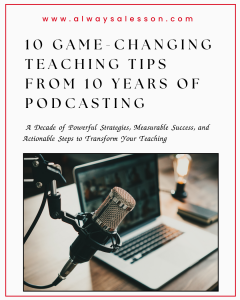Data Collection: What, How & Why
Data collection is an important piece of teaching. However, it can be confusing and somewhat daunting to teachers if they are asked to collect student data without clarity on how and why to do it.
This blog post will explore the what, how and why of data collection.
What is data collection?
 Data collection refers to the process a teacher implements in their classroom to informally or formally gather information to measure the achievement level of students. There is no one way to collect data so teachers have flexibility to try various data collection procedures until they find one that works best for their teaching style and preference. Data that teachers collect can relate to academics and/or behavior. Analysis of the information can make all the difference in how well the student succeeds in that teacher’s classroom.
Data collection refers to the process a teacher implements in their classroom to informally or formally gather information to measure the achievement level of students. There is no one way to collect data so teachers have flexibility to try various data collection procedures until they find one that works best for their teaching style and preference. Data that teachers collect can relate to academics and/or behavior. Analysis of the information can make all the difference in how well the student succeeds in that teacher’s classroom.
How can you collect data?
It does not need to be a tedious or complicated process. For example, when informally assessing students on classroom assignments, teachers can use a student roster and label content objectives across the top of the paper. After teaching a concept when students are working independently, teachers can walk around and peek at student work. They may even have a quick conversation to glean more information. Based on the evidence of student work (and response), teachers can notate on the roster the level to which students understand. For example, a simple 1-2-3 system can be used (1= limited understanding, 2= partial understanding, 3= full understanding).
This same system can be used with formal assessments, like tests, quizzes or projects. Teachers can grade student work and follow the same process for small group instruction for students that need additional practice. For example, teachers can translate percentage scores into the 1-2-3 system. It might look like 0%-49% equals a 1; 50%-79% equals a 2; and 80%-100% equals a 3.
Why should you collect data?
Data collection is one way teachers can ensure they provided targeted instruction to their students. When teachers have factual information (data) to reference as they plan and execute lessons, they can better meet students needs. This allows students to achieve grade level expectations and standards.
Teachers can use their student roster with their 1-2-3 system to create small learning groups to reteach or reinforce a concept. The goal would be that with additional targeted instruction, the students coded 1 and 2 will reach the mastery of a 3 before moving on to the next content objective.
Data also alerts the teacher of trends occurring in the classroom due to their instructional choices. If a lot of students are struggling, instead of pulling small groups the teacher can teach the lesson again in a different way in hopes of bringing clarity to student understanding. If a lot of students are excelling, the teacher can implement enhancements to challenge student thinking.
If the same student is continuing to struggle or excel, teachers can differentiate all future lessons to accommodate the learning needs of those students. This preventive planning helps the teacher intervene ahead of learning obstacles and support students to be successful in the classroom.
Next Steps
If you are looking for tools to help you with data collection, download this resource. This is a great tool to include students in on the data collection process. They are able to track their own performance visually so they can better understand how far their current performance is from mastery.
No matter your system, be sure to collect data consistently and use it to inform how you teach your students! Check out my instructional coaching must-haves here.
GO BE GREAT!
How has this post helped you alter your data collection processes?


